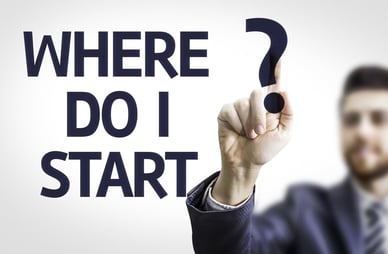 Kaizen events are an effective way to implement changes quickly. They are also a great way to get team members involved in improvement and to foster cross-functional collaboration. When we chat with people who are relatively new to structured continuous quality improvement, they often have questions about Kaizen events.
Kaizen events are an effective way to implement changes quickly. They are also a great way to get team members involved in improvement and to foster cross-functional collaboration. When we chat with people who are relatively new to structured continuous quality improvement, they often have questions about Kaizen events.
Here are answers to the ones we hear most frequently.
What is Kaizen?
This may seem like a strange question for someone considering doing a Kaizen event, but it is surprising how often the technique is introduced without the necessary context. Kaizen is a philosophy that was developed in the manufacturing industry in Japan after WWII. The term is translated as “positive change.” It is the idea that continuous improvement is both necessary and possible. It focuses on respect for people and the belief that even small improvements can have a big impact.
What’s the Difference between Kaizen Events and Rapid Improvement Events?
Just the name. In both cases, a team is assembled to focus 100% of their energy on a process targeted for improvement over a short time frame. The approach is also referred to as a Kaizen Blitz or a continuous improvement workshop.
How Long Does a Kaizen Event Last?
There is no rule set in stone, but the typical duration of a Kaizen event is three to five days. The activities take place in a tight time frame because they require the full attention of the participants, pulling them away from their normal day-to-day responsibilities. Also, the goal is to tackle problems quickly and get the benefits of improvement in short order. This means that some problems simply can’t be addressed quickly enough to benefit from this particular technique.
When Should a Kaizen Event be Used?
We go into greater detail about this in this previous post, but it is a good idea to consider a Kaizen event if:
- An immediate breakthrough is needed
- The problem has a significant impact on business objectives
- The issue can be addressed within the time limits of a Kaizen event
- Team members need training or practice with rapid improvement
- The problem requires cross-functional collaboration
Who Should Participate in a Kaizen Event?
The structure of your Kaizen team will vary depending on the nature of your organization and the problem to be addressed, but successful teams usually include:
Executive Sponsor: Someone at a senior leadership level should be involved in order to secure the necessary resources for the event and to help overcome any roadblocks or high-level decision making that come up.
Facilitator/Team Leader: Someone should be responsible for successful execution of the event. They won’t dictate exactly what happens, but they will assemble the team, schedule meetings, ensure effective communication, and report results.
Process Stakeholders: People who execute the process on a daily basis should be involved in this improvement effort, as should people who rely on the results of the process.
Subject Matter Experts: There may be people within the organization, or perhaps even external experts, who have relevant information and experience to contribute to the event.
Are Kaizen Events a Substitute for Daily Improvement?
No. No. A thousand times, no. Kaizen events are a terrific tool in the improvement tool box, but they are far from the only one. Improvement culture thrives when recognizing and acting on opportunities for improvement is part of the normal course of everyday business. Many gains can be had from changes that don’t need the investment of resources that a Kaizen event requires.
How Do You Prepare for a Kaizen Event?
Much of the success of your event will be determined before it even begins. The planning stage involves preparing a charter for the event. This doesn’t have to be overall formal, but it should include information about how will be involved, which processes will be targeted, and what metrics will be used to measure the baseline results as well as the post-improvement state.
What Happens During the Event?
We have a detailed roadmap for rapid improvement events, but the short answer is the following:
- The current state is defined and documented
- Potential improvements are considered
- Selected improvements are implemented and tested
- Results are measured and communicated
Is there a role for technology during an improvement event?
Software designed to support continuous improvement efforts can be a big boost during a Kaizen event. It provides an easy way to capture the details of what transpires and allows for the collection of documents, images, and other relevant digital artifacts. It also gives team members the opportunity to boost results by reviewing past improvement efforts. Importantly, it provides a way to measure the impact of the event over the long-term.
We hope these basic answers have been helpful. What other burning improvement event related questions do you have? Let us know in the comments and we’ll reply or perhaps pen another post.



Add a Comment